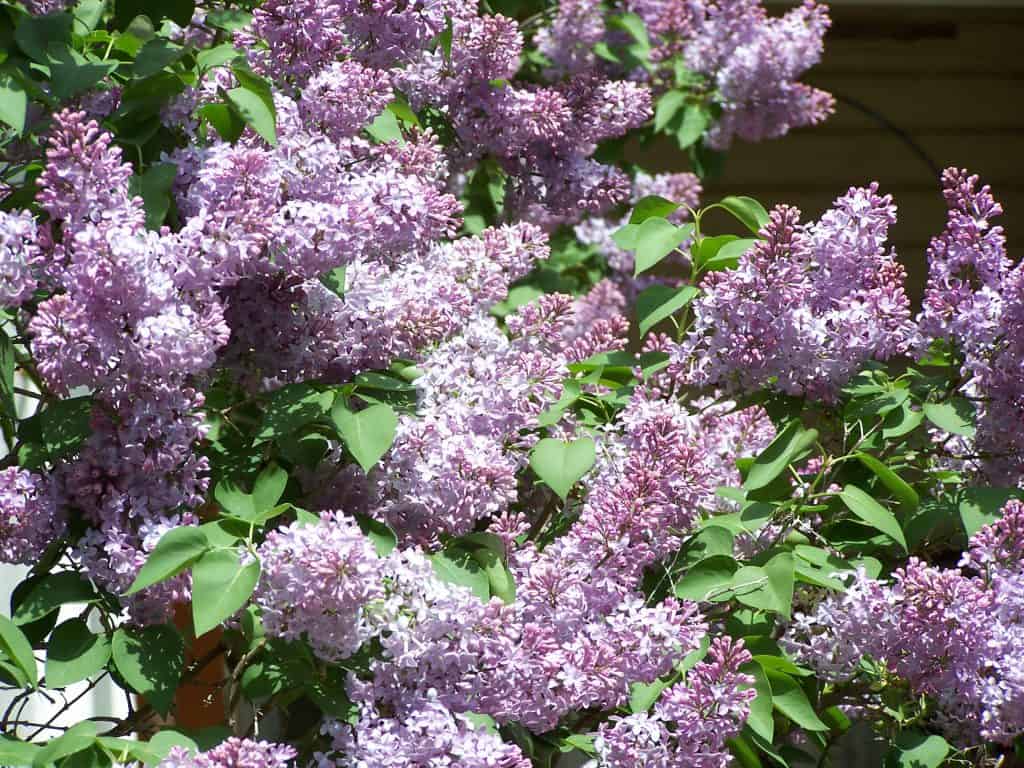Lilacs have long been known for their fragrance. In the early days of America, the old-fashioned lilacs were planted around outhouses as a screen, but more importantly to hide the smell. Unfortunately, lilacs back then only bloomed for a few weeks in spring. Now we have reblooming lilacs that they would have loved to be able to use.
Lilacs come to us from Europe and Asia. They have long been garden staples for their ease to grow and adaptability to conditions. Also we love their flowers and fragrance. There is nothing quite like the smell of lilacs in a vase in the house.
Growing lilacs successfully means learning about the different species(type) and their cultivars, when to prune, where to place, and what the pests and diseases are.
Species and Cultivars of Lilacs
There are 2 types of lilacs, shrub form and tree form. Tree form can be actual trees, like Syringa reticulata, the Japanese tree lilac, or it can be shrub form grafted on to a standard to make a tree. I will go over over them in 3 parts. Each has their place in the garden.
Lilac Shrubs
The lilac shrubs include two major species, vulgaris and meyeri. There are others as well, but they are mostly used as breeding stock and are not available as true species in the nursery trade.
Old-fashioned or common lilacs (S. vulgaris) are what everyone knows from their grandparent’s house, by the outhouse. These large shrubs grow in clumps that spread outward by rhizome and can grow as tall as 20 feet. Many cultivars have been selected from these shrubs. They are easy to grow and care for.
Dwarf Korean lilacs, (S. meyeri) are the other, more recently introduced species. However, they have still been around for decades, they just are not as well known. Their flowers are similar to common lilac, but the fragrance is deeper and stronger. They can grow 5 to 10 feet tall and 10 to 15 feet wide, also spreading by rhizomes.
Cultivars of Lilac Shrubs

There are many cultivars of common and dwarf Korean lilacs. There are also cultivars of hybrids. The following list includes some that grow well in the Central Great Plains region, and may also grow well in other areas of Zone 5 to 7.
- ‘Yankee Doodle‘ (S. vulgaris) – grows 8 feet tall and wide with deep purple flowers. It is recommended for Zones 3 to 7.
- ‘Betsy Ross’ (S. vulgaris) – grows 10 feet tall and wide with pure white flowers. For Zones 4 to 8.
- ‘Sensation‘ (S. vulgaris) – grows 10 to 12 feet tall and wide. It has purple flowers edged in white and grows in Zones 3 to 7.
- ‘Miss Kim’ (S. patula) – grows 6 feet tall and wide with lavender pink flowers. Grows best in Zones 3 to 7.
- ‘Dark Purple Bloomerang‘ (hybrid) – grows 6 feet tall and wide with dark purple, reblooming flowers. It grows best in Zones 3 to 7.
- ‘Dwarf Purple Bloomerang’ (hybrid) – grows 3 feet tall and wide with lavender, reblooming flowers. Grows in Zones 3 to 7.
- ‘Bloomerang Dwarf Pink’ (hybrid) – grows 3 feet tall and wide with light pink, reblooming flowers. Grows best in Zones 3 to 7.
Lilac Shrubs on Standard
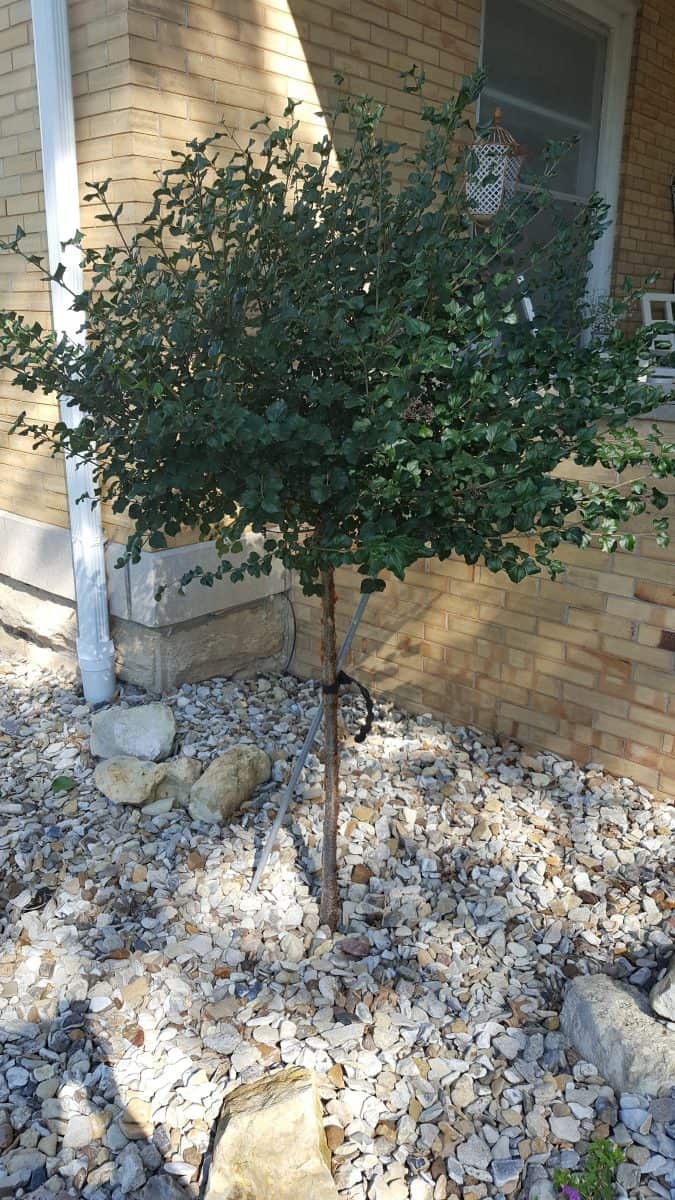
What is a shrub on a standard? A standard is a stem grown to a desired height, which is grafted onto a shrub, with the shrub on top. The 2 pieces must be of the same genus to graft properly. This is where we get lollipop trees from. They really do look like lollipops to me.
Dwarf shrub lilacs such as the dwarf Korean lilacs are most often used for this practice. However, these need to be planted where then can be protected from strong northwest or southwest winds. Because graft unions on these are high in the air, they take longer to develop enough protective callus to prevent breakage.
Also, I have found it necessary to keep these “trees” staked longer than normal, to keep the top heavy plant from bending over on its stem. But, if placed in proper location, they can live for years and be a focal point in the garden.
Cultivars of Lilac “trees”
- ‘Miss Kim’ Lilac Tree – the top can grow 7 feet tall and wide without regular pruning. Flowers are lavender purple in color and very fragrant.
- Dwarf Korean Lilac Tree – can grow 6 feet tall by 10 feet wide, with purple flowers. I have pruned some of these that were at full size.
- ‘Tinkerbelle’ Lilac Tree – grows 8 feet tall by 4 feet wide with large, pink flowers.
Lilac Trees
The Japanese tree lilac, S. reticulata, is a true tree, albeit a small one. The largest and oldest one that I have seen was around 35 feet tall, growing in a cemetery in Northeast Kansas. The catalog states them as getting 25 feet tall and wide. However, despite this, these are wonderful ornamental trees for the landscape.
The bark of the lilac tree resembles that of a cherry, with many lenticels and dark color. The leaves are typical lilac leaf shape, heart-shaped like the common lilac. The flowers are huge, panicles of white to cream colored and loved by pollinators of all types.
Cultivars of Lilac Trees
Until recently, there were no cultivars of these ornamental trees. But gardeners have wanted more of them, realizing their landscape and garden value.
- First Editions ‘Snowdance’ – has creamy white flowers on a 20 foot tall and wide tree.
- ‘Ivory Silk’ – has pure white flowers on a 25 foot tall and wide tree.
- ‘Snowcap’ – grows 20 feet tall by 15 feet wide with greenish white flowers.
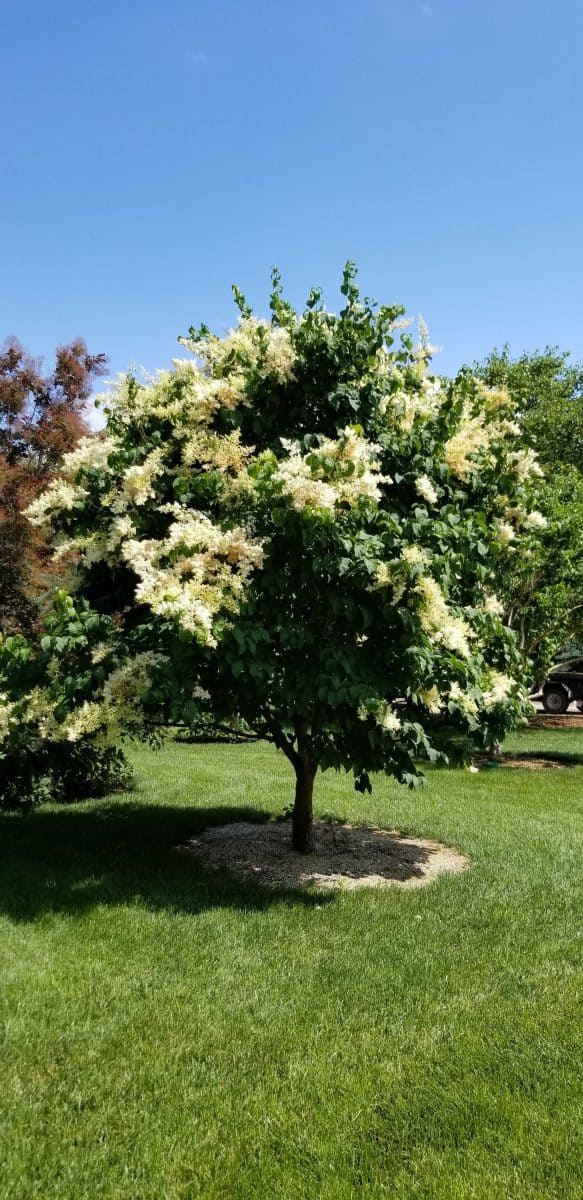

Pruning Lilacs and Lilac Trees
I get a lot of questions about when to prune lilacs. Unfortunately, people usually ask at the worst time to prune. Lilacs set their flower buds on the previous season’s growth aka old wood, (except the hybrid Bloomerangs which bloom on old and new wood). Because of this, pruning needs to be done as soon after flowering is done as possible.
Here in Northeast Kansas, May and June are the best times to prune. However, in recent years, it has been hotter in May and June than normal, making pruning difficult. If shrubs are pruned hard back (to encourage better flowering the following year) when it is hot outside, then they may suffer from sunburn or leaf scorch.
Pruning can be done in late fall (after leaf drop) or early spring (before bud break), but this will eliminate the majority of the flower buds. However, this should be done if the plant is far overgrown. Many of my customers prefer to prune their lilacs every 3 to 5 years, doing a hard trim, rather than pay to have it done every year.
Lilac trees are difficult to prune for regular flowering, because of their size, but light pruning can be done with a ladder or pole saw. Prune off old flower heads and seedheads after flowering has finished to encourage new growth. Prune the rest of the tree like you would for any small ornamental tree.
Where to Plant and Place Lilacs
Lilacs prefer to be planted in full sun locations. They are very adaptable to a wide range of soils, from heavy clay to well-drained. Do not plant them where they will have wet feet or standing water for more than a few hours. Planting them in part shade may increase the chance for disease issues, like powdery mildew.
Lilac shrubs can be used as hedges, screens, and windbreaks. Plant them as the backdrop to a shrub or perennial border, with smaller plants in front of them. I have old-fashioned lilacs in my border along the neighbor’s driveway, which runs across my property. This helps screen my yard from the neighbor as they drive in or out.
Lilac trees should be planted in full sun conditions. Because of their small size, they should be used as an accent or ornamental at the corner of a garden bed. Or plant a grouping of them with redbuds or other ornamentals in an island bed.
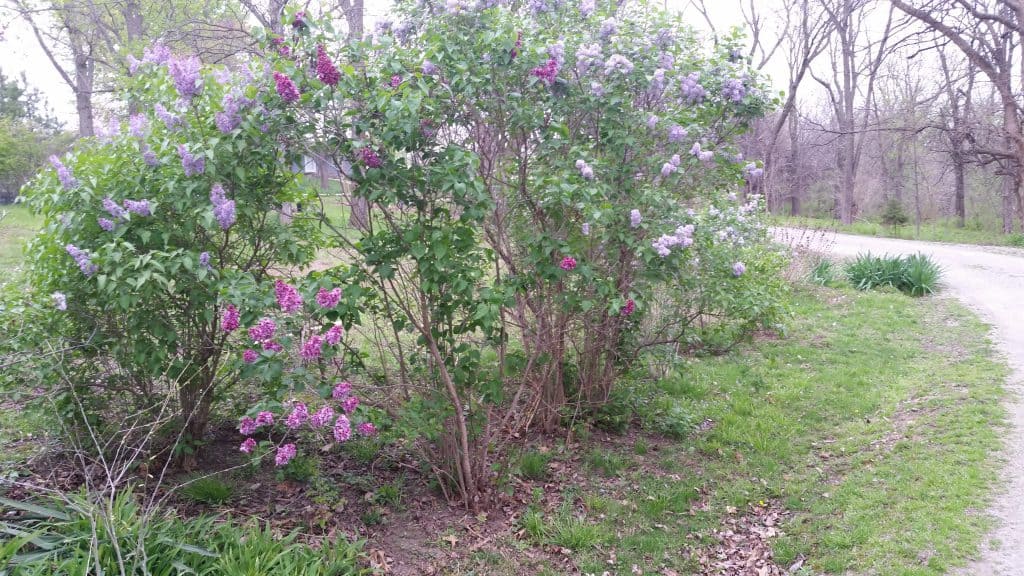
Pests and Diseases of Lilacs
Lilacs are fairly easy to grow, with only a few pests and diseases affecting them. By properly placing them in the landscape, you can avoid the worst diseases, like powdery mildew.
Insect Pests
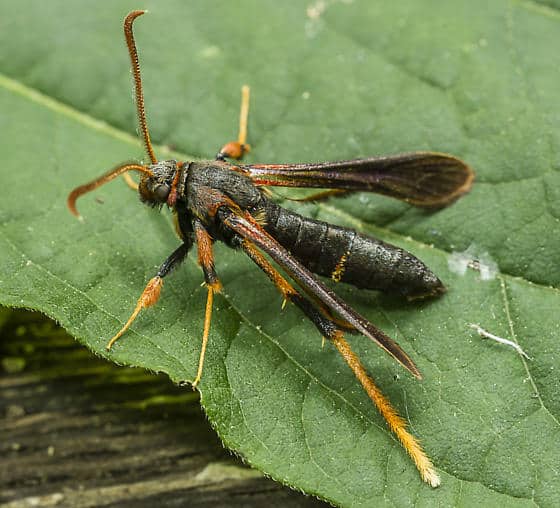
There are 2 major insects that can cause serious damage to lilacs, borers and scale. There are a couple other insects that may chew some leaves, but are not considered serious pests. Those include bagworms, fall webworm, and leaf miners.
Ash/Lilac Borer is a clearwing moth. The larvae chew and tunnel into the branches and stems, causing stem dieback. If there is an infestation, several branches may die back at once. This borer can be a serious cause for concern on the highly susceptible Dwarf Korean Lilac. If necessary, treat lilacs with Fertilome’s Tree & Shrub Systemic Insect Drench.
Scale are a plant sucking insect that is difficult to kill during the growing season, as they have a hard, waxy outer covering that protects them. If you can catch them during their crawler stage they can be treated them. Another way to treat for scale is to spray the plant with a dormant oil spray in winter, when the temperature is above 40o F for at least 4 hours, on a sunny day. Scale may also be killed by using a systemic insecticide.
Diseases
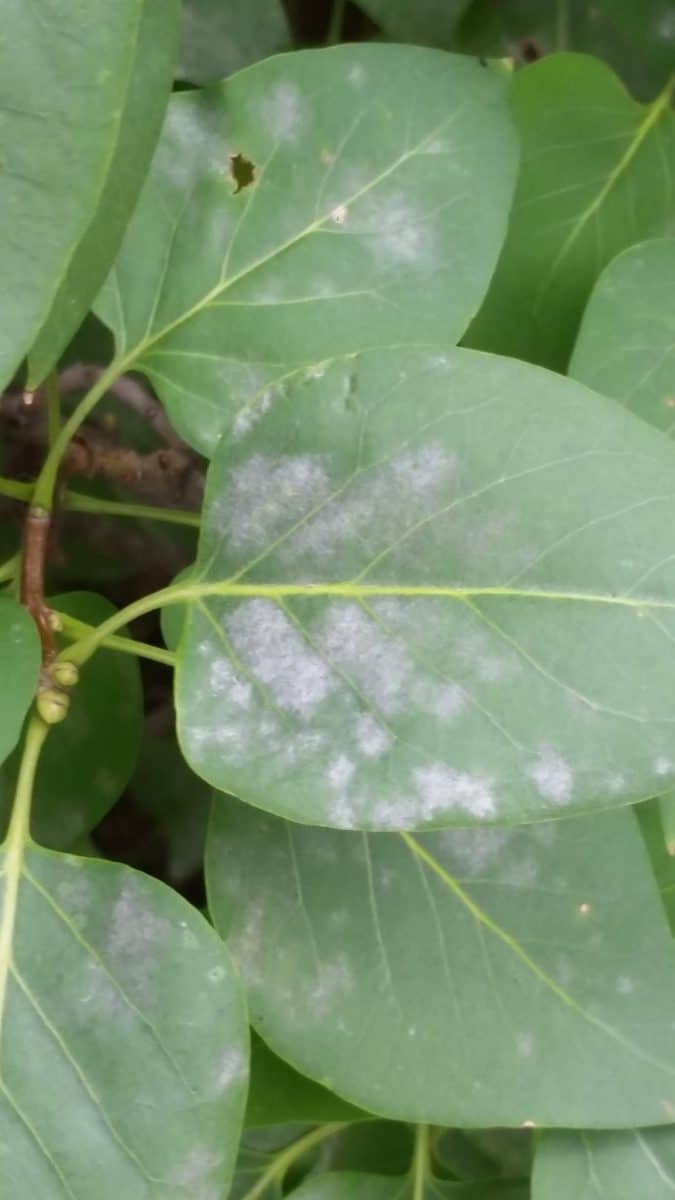
Nearly every plant gets some sort of leaf spot, so that is not a major disease. But there are 2 diseases that need to be monitored on lilacs. Diseases can weaken plants, which allows secondary pests (other diseases or insects) to come in and finish off the plant. This is the main way that older plants are killed.
Powdery mildew weakens the plant by covering leaves with a white, powdery fungus that limits photosynthesis. Proper plant placement is the best way to prevent powdery mildew. Also, planting resistant cultivars will help. But if you have lilacs growing in part shade with little or no air movement, you will get powdery mildew in wet to extremely wet years.
Bacterial Shoot Blight reminds me of fireblight on pears. And the 2 diseases are similar in appearance. Bacterial shoot blight is common in wet springs, on shoots and leaves, causing a scorched, blackened effect. This can affect the overall health of the plant, if not pruned out immediately. Clean your pruners between cuts with alcohol to prevent disease spread.
Conclusion
Lilacs are great additions to the shrub border or as hedges, if planted in full sun conditions. Their fragrance and flowers are wonderful, and the flowers can even be used to make a floral jelly. Enjoy these wonderful plants.
Happy planting!

